Produce more, better, faster, consuming fewer resources. This is a reality that we face every day, regardless of our education, experience or activity. The world has changed! The global financial and economic situation, the exponential development of new technologies and the reduction, over the past decades, of the weekly workload are some of the key factors that have led companies to put in the forefront of their concerns notions like productivity and quality. At this change, construction companies were no exception.
Produce more, better, faster, consuming fewer resources. This is a reality that we face every day, regardless of our education, experience or activity. The world has changed! The global financial and economic situation, the exponential development of new technologies and the reduction, over the past decades, of the weekly workload are some of the key factors that have led companies to put in the forefront of their concerns notions like productivity and quality. At this change, construction companies were no exception.
A required change
In an increasingly globalized economy, combined with a clear reduction of the amount of construction projects, construction companies are facing a progressively high competition. Finish even more complex works, with even more faster speeds and even more reduced costs, has become a decisive factor in increasing competitiveness.
To achieve this goal, and considering the current situation, construction companies should be able to improve various aspects, critical to their survival.
On one hand, they should to be able to make a more and more rigorous estimation of the costs and quantities required to build each project, in order to reduce the inherent risk and the constant budgets overruns. On the other hand, they should be able to analyze effectively and globally all the different projects, from all the disciplines, in order to identify, as early as possible, not only the elements who are able to reduce costs and optimize production, but also the several project errors which can delay the delivery of the work. Once the execution and coordination of projects are complex and time-consuming tasks, the appearance of unexpected incompatibilities during the construction phase, regardless of how small they might be, can quickly have a strong impact on the schedule and budget of the project, since a bad coordination or quantification of materials and hand labor can absorb up to 30% of construction costs.
The use of BIM software, by enabling you to manage and coordinate appropriately all the information of each project, not only increase considerably the efficiency of construction companies, but also increases its competitiveness.
From model to project views
In the traditional method, the tasks related to the production of 2D and 3D documents are generally distributed among the various employees. The plans, sections, elevations and other drawings are designed bi-dimensionally, in parallel which is often created, from scratch, a three-dimensional model, or part of it, which aims the extraction of more communicative documents, such as renders or animations. Once all produced documents are treated as independent elements, the precision, accuracy and concordance of these elements depends on a single factor: a good communication between the different actors.
Unfortunately, and despite all the efforts made by those involved, the frequent lack of time ally to the variety of stakeholders - that varies depending on the project size - often become an obstacle to good communication, consequently compromising not only the integrity of the project but also its realization.
By using this traditional method, any change that occurs in the project, becomes a complex and lengthy task. The information must be provided to those involved, which in turn should change all the elements manually, therefore consuming resources unnecessarily.
At ndBIM, we believe that the adoption of new technologies - more precisely BIM software - and naturally, new working methods, allows you to considerably reduce the time spent on the document preparation and consequently increasing the time devoted to the project, more precisely, the development of the under construction idea.
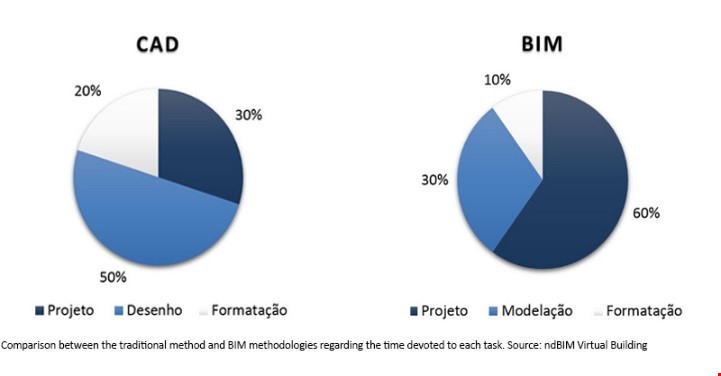
The use of BIM software – quoting, as an example, ArchiCAD, developed by Graphisoft - allows the creation of three-dimensional models, which match a real virtual representation of the unbuilt project.
Those models are composed by three-dimensional parametric elements, interconnected to each other, and which can be nurtured or changed simultaneously by all the employees of the same project, regardless of their functions. All project information shall be concentrated in a single model, available to all the participants, thus facilitating communication between all the teams.
In BIM models, the various elements, as well as their connections, are automatically updated whenever a change is made, by any actor. All these three-dimensional elements are directly linked to each other, which makes that a simple change of shape, position, texture or any other parameter, have a direct influence on all elements of the model, consequently ensuring an accurate representation of what to build.
Unlike the traditional method, by the use of BIM software, making a change to the project - even though it is constructed only virtually - becomes an easy and automated task. Changing the project means also automatically update all the plans, sections, elevations, etc., and since this powerful tool offers the possibility of extracting rigorous two-dimensional drawings from the virtual model and this, at any stage of the project. To achieve this, the considerable amount of data existing in these models must be filtered and published, considering each participant's project formats.
In short, a BIM model, as long as updated, allows you, in a few minutes, to produce any drawing, that represents the exact state of the project at the precise moment in which it is published.
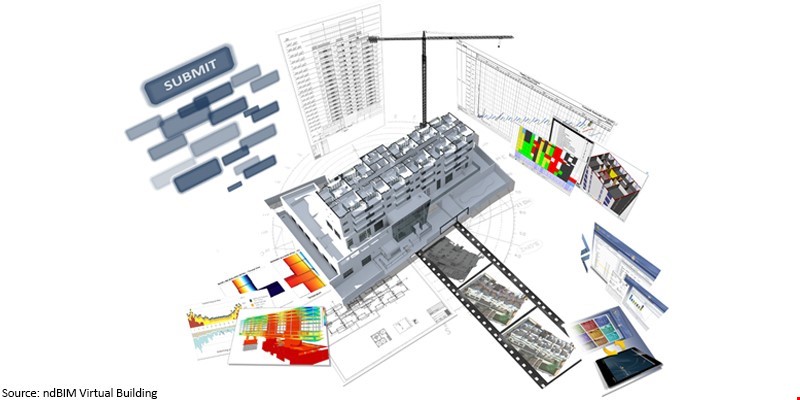
Apart from the possibility of visualizing and presenting the project through two-dimensional elements, enhanced by the ArchiCAD tool, the use of a BIM model also offers the 3D creation feature of project views, not only perfectly faithful to the reality, but also to the two-dimensional representation, since both these functionalities are combined in a single tool.
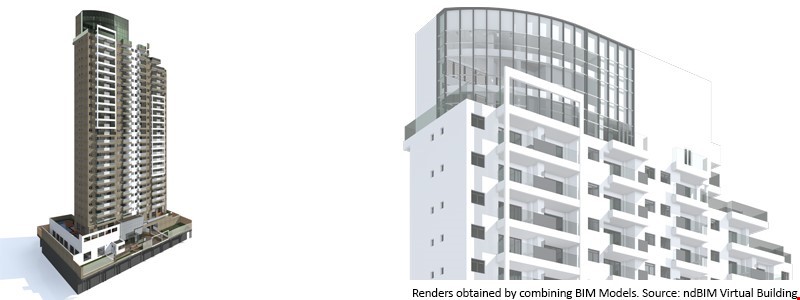
This development of three-dimensional representations plays an essential role at some stages of the project. In early stages, these representations can acquire a key role for you to stand out from your competition. The presentation of ideas to clients is clear and innovative, speeding up the understanding of not only the design but also the construction. With the use of BIM, it is easier to both study and propose alternative design and construction solutions, either for economic or technical reasons. In later stages, these representations can also be used to clearly show the strategy, methods and construction process: the client embrace the ideas, presented with total confidence, since they strictly represent the reality before the construction even start.
Briefly, with the change of methodology and adoption of new BIM tools, tasks related to the production of two and three-dimensional documents - consuming significant resources - are automated and recede to the background. The stakeholders’ path shall be the same and they all need to work together with a single goal – to create a virtual model that represents the exact project reality.
From model to disciplines coordination
We mentioned before how difficult can be the collaboration and communication between the various actors involved in construction project. Next, we will focus our attention on the difficulties and problems derived from the coordination of multiple designs, created by all these actors, i.e., the coordination of the several disciplines.
Constructing a building is undoubtedly a complex operation. The companies that are able to coordinate more efficiently the large flows of information between all the stakeholders, and consequently anticipating errors and incompatibilities of the project, are also the companies that have the highest probability of delivering a particular project within the established time and cost.
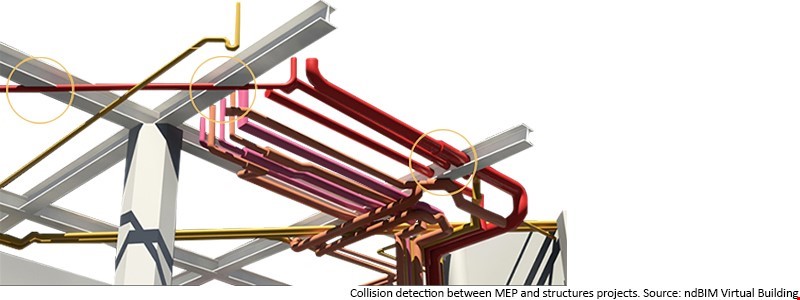
It is a fact, the more advanced the project is, the greater is the cost to correct all the design problems.
At the design phase, the communication of errors and incompatibilities is mostly irrelevant, not having, generally, large impact on cost or time.
In case the project is already under construction, the presence of errors or incompatibilities can be disastrous in the project completion, as the time between the design and the start of the work can sometimes be very extensive, the design teams may already be involved in other projects or even, in some cases, be working in other companies. Therefore, the investment made in the design analysis and correction can be extremely high.
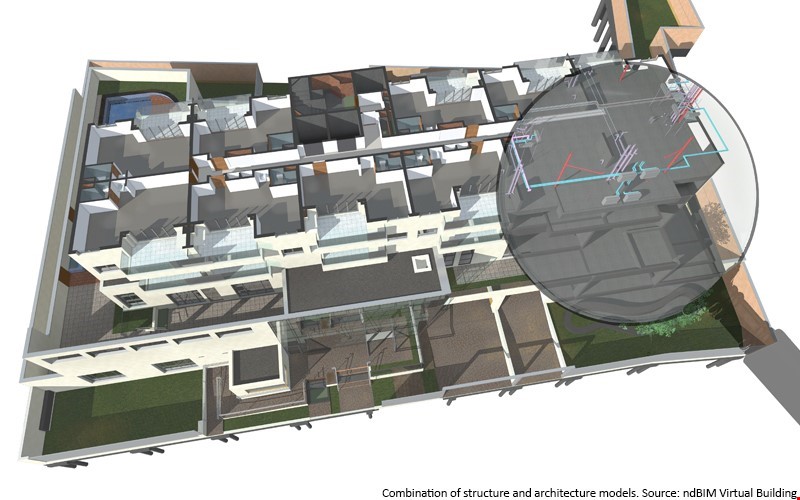
Thanks to the use of BIM technologies, combined with the know-how of some experts, the models coming from different disciplines can, from a very early stage, be combined into a single database and verified through automated processes. Errors, omissions or conflicts between various specialties are spotted virtually, and therefore resolved even before the licensing and construction phases, consequently reducing the risk of budget overruns.
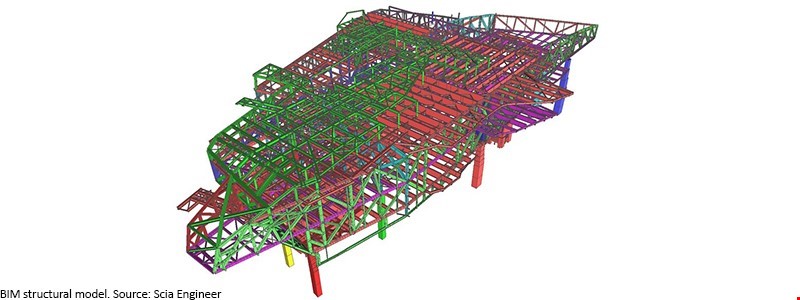
From model to Quantities take off
Finally, we will discuss another one of the numerous advantages of using BIM models – Quantities take off.
In the traditional method, calculating the quantities of materials for budgeting represents a manual, long, exhaustive and, above all, subject to human error process. Subcontractors – which are an additional cost – or external teams not involved in the design phase, who have, on the one hand to analyse and understand the project and, on the other, to calculate the amount of resources required for each project construction, are often the ones who do this process. Through the use of BIM models, associated with software capabilities as Vico Office, developed by Trimble, this process is automated, easy, fast and, above all, more accurate.
In fact, and since the BIM model is a faithful representation of the actual building, it is possible to extract from it all the resources needed at each stage of the project, namely materials. The task of materials deliveries planning is improved and orders can be made with greater precision.
To that end, the several building elements are grouped according to their type and associated with their conception data (resources, labour, productivity, etc.). The calculating is done automatically and any changes made to the project will affect immediately the quantities extracted from model.
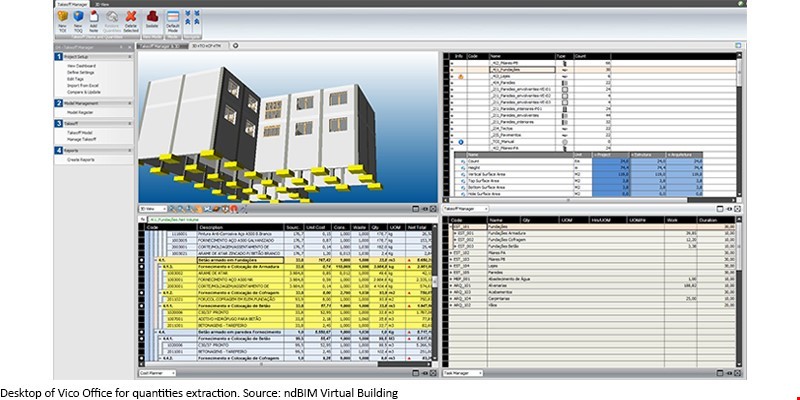
Studies performed by several companies in pilot projects reveal that the quantities extracted from BIM models are extremely reliable as long as, obviously, there is an effective methodology for quality control of the model.
By automating the exhaustive process of calculating quantities, you will produce estimates earlier and more frequently, evaluating and comparing more easily the implications of each design alternative in the total cost of the project.
At last, and once we already enumerated some of the advantages offered by BIM - like the elimination of incompatibilities, optimization of the constructive solution, elimination of errors and omissions and, of course, the extraction of drawings automatically updated -, we will choose, as a conclusion, to approach to those who may have more advantages adopting these new methodologies.
If you are an Owner, it will allows you, not only to have an improved design and more effective planning, but also to mitigate the risk of your investment. ndBIM, through its project team and its partners, is excited to work with you in the design stage of your projects.
On the other hand, If you are a Constructor and you do not receive your projects in BIM models, don’t worry! ndBIM can be your partner in the conversion of two-dimensional elements to high quality BIM models, which will support you, not only for budgeting but also for the physical and economic planning.
